MASTER’S FIELD PROJECT
APRIL 2019
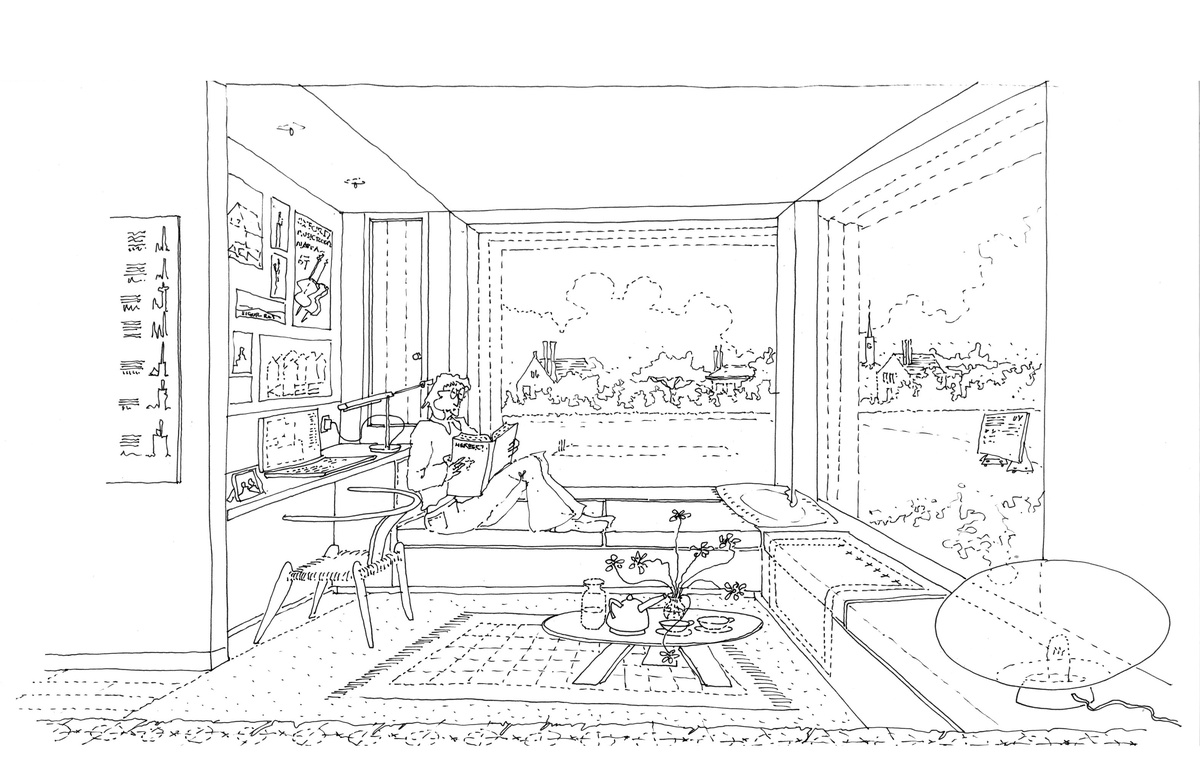
When reflecting on the work of our practice, the chamfered corner, is a recurring interest. This detail has developed over the years from our preoccupations with the Miesian re-entrant corner, the simplicity of a trabeated structure, and a desire to find ways of expressing a deep façade.
Simple chamfers in concrete and stone were employed in recent completed projects for Hampshire House and The Sultan Nazrin Shah Centre, Oxford. At the Master’s Field site in Oxford, currently under construction for Balliol College, a corbelled chamfered detail is incorporated in a load bearing façade. This project comprises eight student accommodation buildings and a pavilion arranged around a series of courtyards overlooking a cricket pitch.
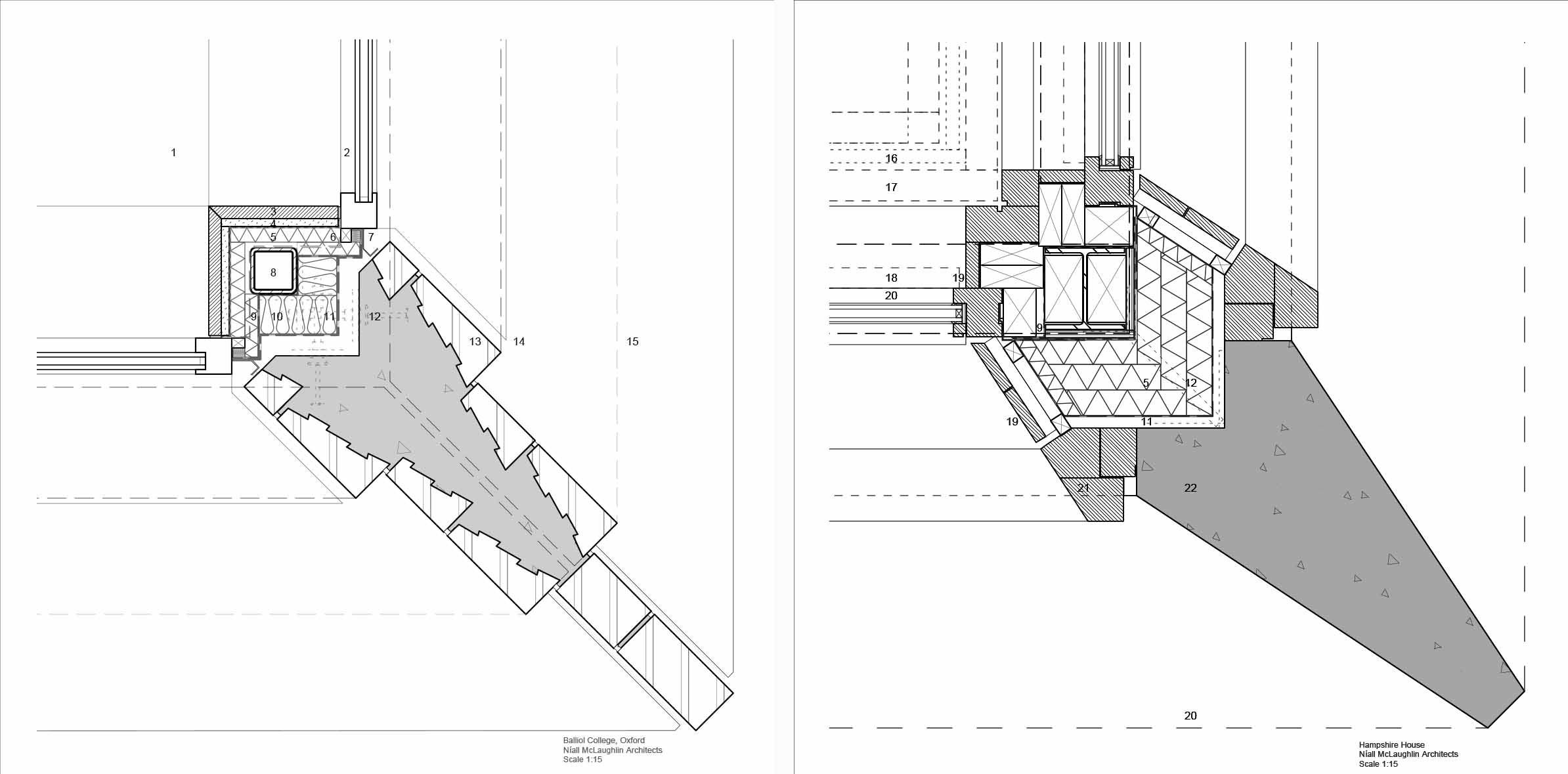
A brick-clad chamfer at the corner between two windows is used throughout the accommodation buildings. This establishes a shifting perspectival relationship as one moves through the site, and gives all the buildings a common language. Corbelled brick and concrete lintels and mullions set up a trabeated structural rhythm which clearly defines each individual student bedroom and creates a delicate play of light and shadow across the façade. A series of finely detailed brick and concrete panels are layered within the depth of the window reveal, articulating a secondary rhythm which expresses the transition from solid to glazed elements.
The detail enables the depth and structure of the wall to be elegantly expressed, maximizing its presence when viewed externally and minimizing its presence internally. It also forms a generous threshold which provides privacy for students inside engrossed in their study. For moments of welcome distraction, the large picture windows frame uninterrupted views over the cricket pitch and across the campus.
The expression of a chamfered corner produces challenges in construction, particularly when expressed in precast concrete components clad in corbelled brickwork. When forming acute angles with orthogonal bricks, special consideration must be given to alignments and bonding. Interface details demand careful thought regarding sequencing and tolerances to achieve a symbiosis of structural performance with aesthetic ambition.
Externally, in the plan detail shown here, the apex of the chamfer is formed from stacked brick headers. This exposes three faces of each brick, limiting the choice of bricks, which are typically produced with only one finished stretcher face. Brick specials are required to form the chamfered corbel of the lintels, and grids are carefully set out to ensure alignment of vertical and horizontal corbelling. We looked to the meticulously detailed and crafted brickwork of Jensen-Klint’s masterpiece, Grundvig’s Church in Copenhagen, for expression of stepped vertical forms.
Internally, minimising the corner where the windows meet produces intricate challenges in the alignment of linings, blinds, reveals and fitted furniture. This complex resolution of constituent parts all work hard to achieve the aesthetic objective of the simple glazed chamfered corner.
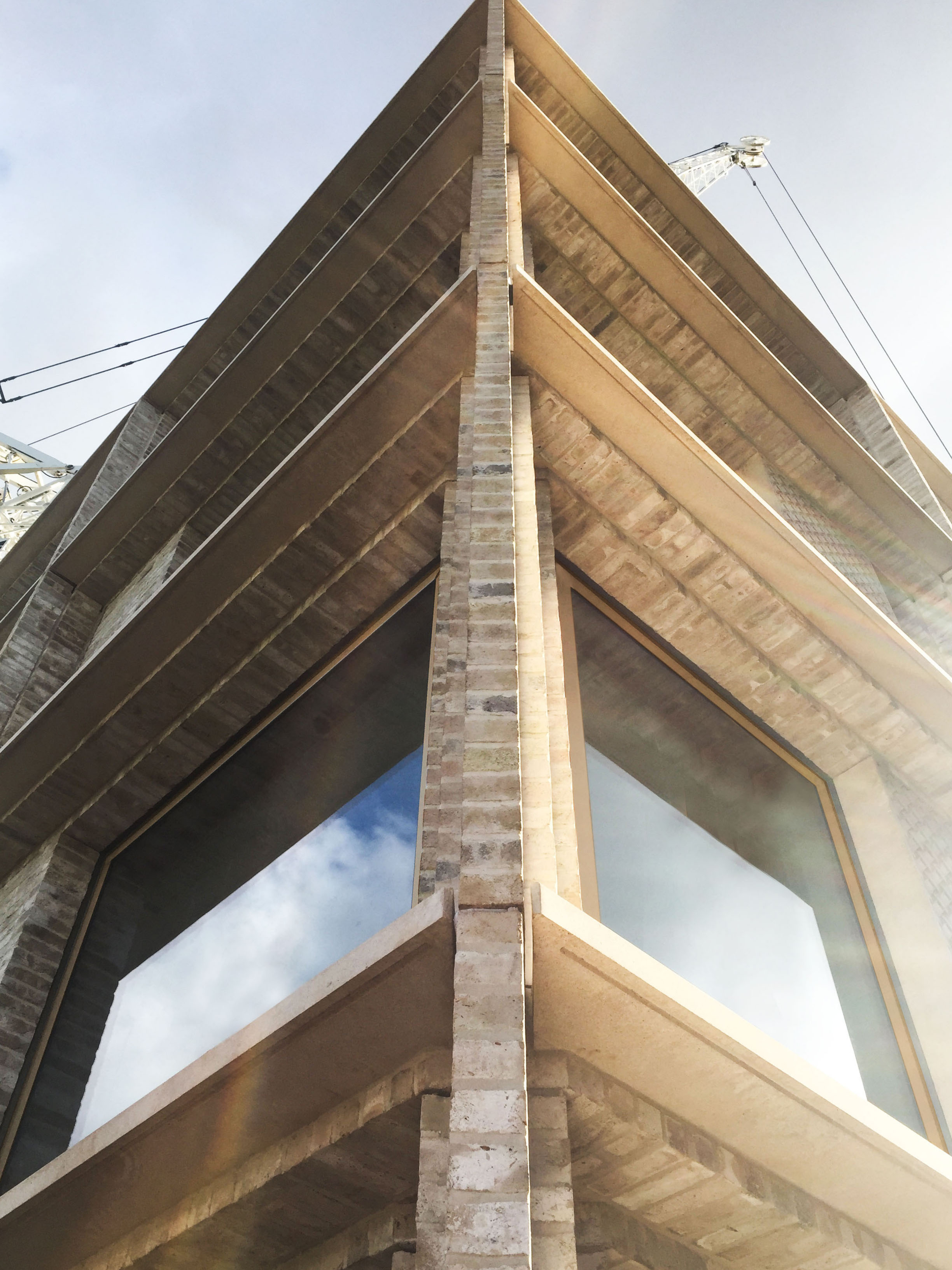
Detail Key
1.Whitewashed ply bench 2. Aluminium window 3.Whitewashed plywood reveal 4.Plasterboard 5.Rigid insulation 6.Steel window fixing brackets 7.Metal pressing 8.Wind post 9.EPDM/ vapour barrier 10.Mineral wool insulation 11.Breather membrane 12.Steel restraint brackets 13.Corbelled brick faced precast concrete mullion 14.Flashing 15.Concrete cill 16.Concealed curtain track 17.Oak joist over 18.Concealed roller blind 19.Timber panels 20.Timber framed window 21.Prelaminated timber frame 22.Precast concrete mullion 23.Precast concrete coping over
FIAT-MIRAFIORI
NOVEMBER 2014
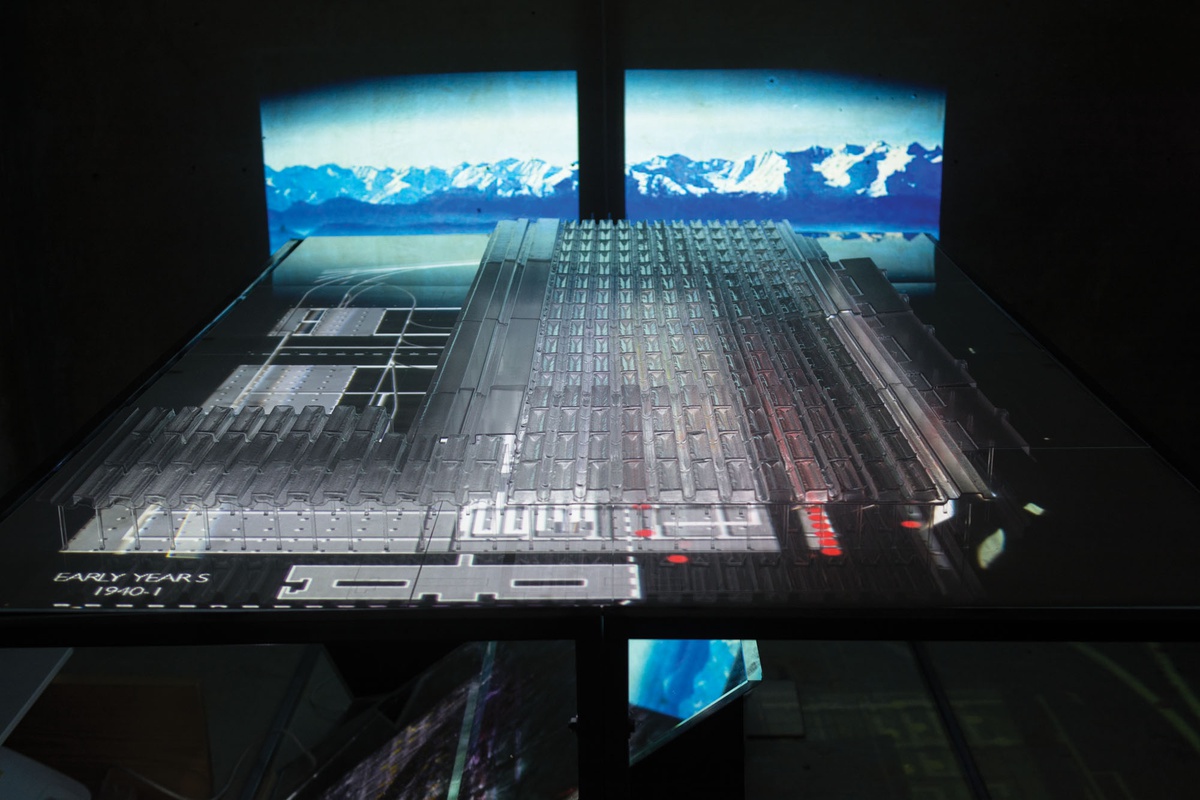
FIAT-MIRAFIORI, Turin, Italy
Located in a suburb of post-industrial Turin, once the ‘Fordist world’s most prototypical town’, the proposal is for a campus university sited within the endless 20m x 20m concrete grid of Fiat’s behemoth Mirafiori plant (1939). The proposed high-speed railway link between Lyon, Turin and Budapest is seen as a driving agent in re-establishing the city and its traditional expertise in manufacturing within a wider European context. The project is an exploration of the open-plan, balancing the generic with the particular by interweaving new programmes and functions into the repetitive matrix of the existing concrete frame.
The design focuses on the sectional distribution of the master plan, with workshops, offices, lecture theatres and public squares at ground level, and housing, communal facilities, nursery schools and shared gardens inhabiting the building’s roof. Occupying a site equivalent in area to Turin’s historic centre, the project envisages Mirafiori as a new city quarter articulated by the shifting presence of production, research, commerce and living.
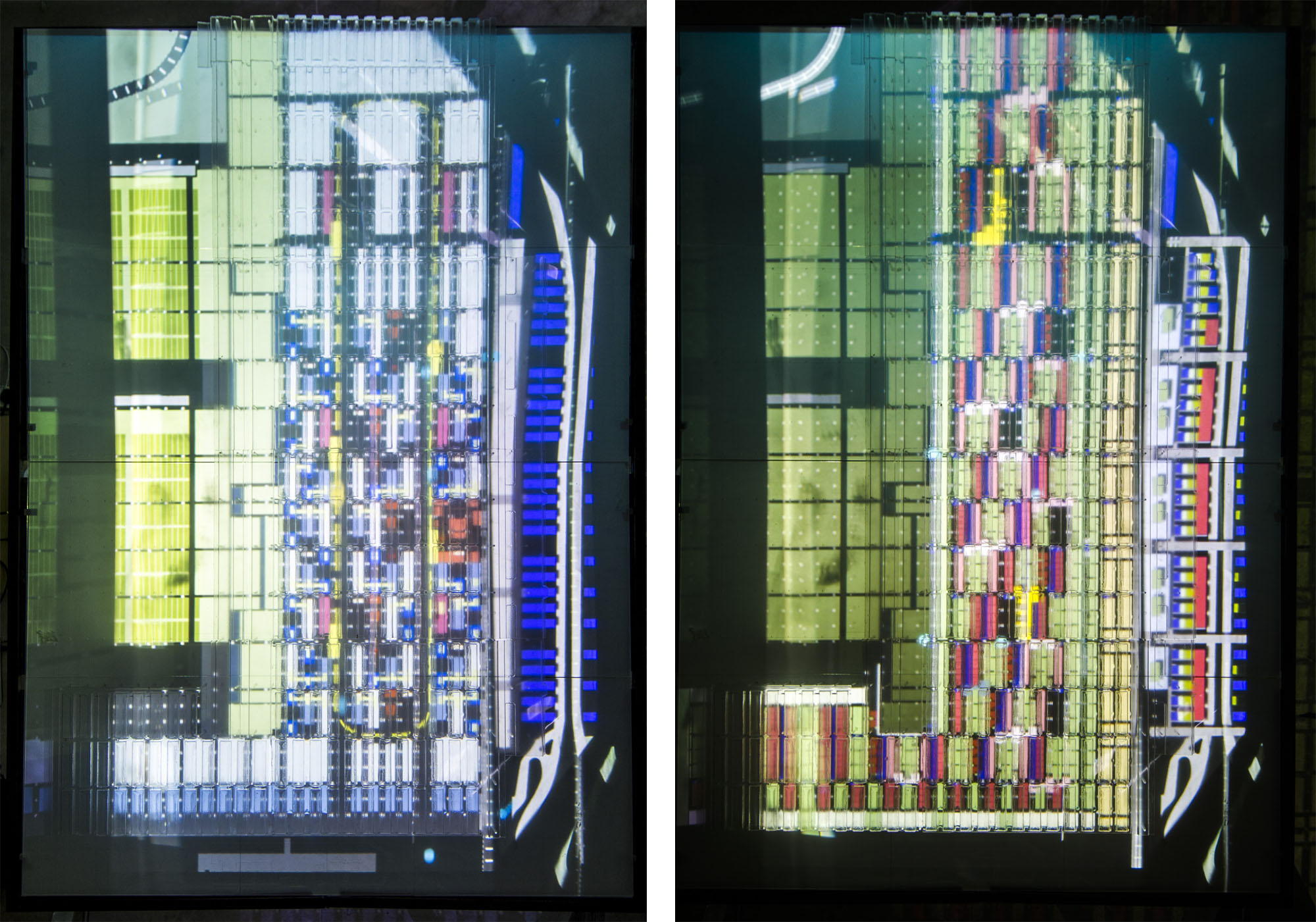
The images above depict an installation built as a 1:500 representation of the site. Conceived as a simple armature, the model afforded a large-scale, neutral, three-dimensional surface that momentarily held the light and colour cast by a moving, digital projection. I was interested in how this plain surface could take the role of both narrative device, upon which the dynamic history of the building’s conception, construction and early operation could be retraced and re-recorded, and serve as a framework within which to test differing scenarios for the site’s re-inhabitation.
Reflecting on the experience of making this installation, I have now come to realise that what had started out as process of historic site analysis, drawn to scale and illustrated through light, had become (quite unintentionally) suggestive of a proposed architecture. Experienced at 1:1, the installation produced a dreamy environment of diaphanous surfaces, coloured light and whirring sound. Whilst the subject and intent of the installation was still historical, it no longer just retold but ‘produced’ a shifting architecture, temporary in nature and formed through the lightest touch of light, colour, diffraction and shadow. Exploring this disjunction between intent and outcome a bit further, I can now recognise that through the initial planning, fabrication and composition, activities that at the time I only understood as a means to an end, I had already made a series of decisions about the installation’s form, scale and materiality. The subsequent processes of animation, projection, filming and finally editing footage and sound together, added further faculties of decision, critique, editorship and importantly chance or accident. Each, in turn, contributed an iteration – an opportunity to reflect, develop and transform – which, slowly but surely, transformed a representation of the past into a proposal for the future.
Alastair Browning is a member of the Auckland Castle team at Niall McLaughlin Architects. His thesis project FIAT-Mirafiori, undertaken whilst studying with Unit 17 at the Bartlett and tutored by Niall McLaughlin, Yeoryia Manolopoulou and Michiko Sumi, has been selected as one of 11 highly-achieving postgraduate projects from across London’s architecture schools to exhibit at the Architecture Foundation’s Futures in the Making Exhibition.
Futures in the Making is being held at Feilden Clegg Bradley Studios, Twenty Tottenham Street, London W1T 4RF ( Until the 28th November 1.45 – 6pm)




